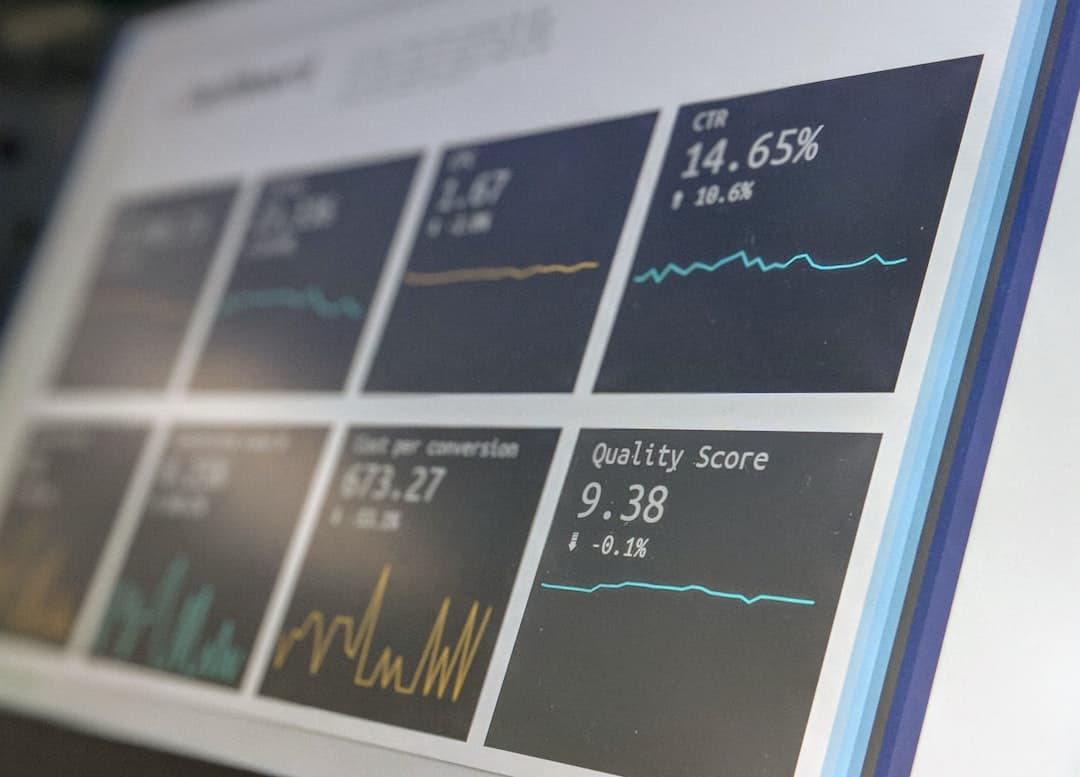How Digital Marketing Agencies Can Scale Content Without Sacrificing Quality: The AI-Powered Solution to Your Biggest Content Bottleneck
Introduction: Rethinking Content Challenges for Today’s Marketing Agency
The Unique Content Demands Facing Modern Agencies
Modern agencies face unique and evolving challenges in meeting content creation demands for their clients. Unlike in-house marketing teams, agencies juggle multiple industries, brands, and campaign types at once, each with distinct voice guidelines, compliance needs, and editorial calendars. This complexity requires flexible systems and talent capable of shifting between styles while maintaining high quality and relevance.
First, volume is a constant pressure. Agencies must produce website copy, SEO blogs, social posts, email campaigns, and multimedia every month for multiple accounts. While traditional content calendars created manageable rhythms, today’s accelerated digital timelines leave little room for delays or manual bottlenecks. Scaling content creation efficiently now sits at the heart of agency service models.
Meanwhile, clients expect content to reflect the latest market trends and platform requirements. For instance, social-first campaigns often demand real-time response and frequent format changes. Large product launches may require rapid creation of cross-channel assets. Agencies also face increased scrutiny for originality; clients want unique brand expressions, not repurposed templates or generic messaging. Plug-and-play is no longer enough.
Additionally, collaborative content production brings its own hurdles. Agencies coordinate with freelance writers, designers, SEO experts, and client-side stakeholders—sometimes across time zones and languages. Managing approvals and feedback, maintaining version control, and ensuring all voices align around a consistent brand story requires robust workflow strategies and communication tools.
In summary, the content demands on agencies have become more complex and urgent, requiring adaptable frameworks and expert teams who understand scalable production, creative differentiation, and seamless collaboration. Success hinges on how well an agency can orchestrate these moving parts while delivering quality at pace.
Why Scaling Content No Longer Means Lowering Standards
Agencies today can scale their content creation workflows without sacrificing quality, thanks in large part to advances in AI-powered content generation and smart process design. Previously, increasing output meant accepting short cuts, repetitive messaging, or inconsistent brand voice—all in the name of meeting tight deadlines or large campaign demands. That perception has shifted.
Modern AI tools don’t just automate production; they help uphold and even strengthen standards. For example, built-in content optimization features analyze not only for keyword integration but also for readability, tone, and compliance with client guidelines. This reduces errors at the source and ensures every asset aligns with both search intent and brand personality.
Furthermore, collaborative AI systems make it easier for cross-functional teams to maintain a unified standard. Editors, strategists, and writers can access automated quality checks, shared style guides, and tracked revision histories. These features foster transparency and make it simple to onboard new contributors without losing consistency, even as volume grows.
The right blend of automation and human expertise enables agencies to quickly adapt content across platforms, regions, and client types. Instead of watering down output, technology enhances the ability to deliver nuanced, high-impact messaging at scale.
Therefore, scaling does not mean abandoning high standards—when agencies embrace AI and process clarity, greater volume becomes an opportunity to elevate, rather than diminish, editorial quality and client satisfaction.
Recognizing the Bottleneck: Common Content Obstacles in Agencies
Workflow Inefficiencies and Their Impact on Output
Workflow inefficiencies can significantly hinder content creation workflows in agency settings, directly impacting both output quality and delivery timelines. When communication channels are fragmented—such as relying on disparate email threads, unconnected project management apps, and manual file sharing—crucial feedback is delayed or lost. This often leads to duplicated efforts when team members are unsure about the latest content versions or assigned responsibilities.
Another common bottleneck appears when decision-making is overly centralized or approval chains are unclear. If drafts sit idly awaiting feedback, or if stakeholders frequently request last-minute changes, production slows. These delays jeopardize the timely publication of deliverables like AI-powered content generation assets, especially for clients with fast-moving or seasonal campaigns.
Manual processes further limit efficiency. For example, physically tracking content calendars, keyword lists, or creative briefs can lead to inconsistent messaging across channels. Relying on traditional editing workflows also risks missing small errors or misalignments with clients’ branding and compliance requirements.
The cumulative result is a diminished capacity to deliver high-quality content at the necessary pace. Missed deadlines can erode client trust, while the stress of unfinished projects may impact team morale and lead to burnout. Furthermore, wasted resources on rework and revisions draw time away from higher-value strategy and creative work.
In summary, agencies that do not address workflow inefficiencies face direct consequences in output reliability and quality. Adopting collaborative tools, automating repetitive steps, and clarifying roles and review points are critical to unlocking smoother content creation workflows and sustaining client satisfaction.
Balancing Volume with Consistent Content Quality
Producing a high quantity of content while maintaining consistent quality remains a core challenge in content creation workflows, especially for agencies managing multiple client portfolios. As content demands increase—driven by always-on digital campaigns and evolving SEO requirements—there’s a real risk that quality may be sacrificed in the race to deliver more, faster.
To address this, agencies must pair AI-powered content generation tools with standardized editorial processes. While AI helps generate first drafts, outlines, and repurposed assets at scale, human oversight guarantees voice consistency, accuracy, and messaging that resonates. This synergy reduces manual workload, allowing editors to focus on style, creativity, and brand alignment rather than routine corrections.
Developing clear content guidelines further supports this balance. Centrally managed tone-of-voice documents, template libraries, and SEO checklists provide every contributor—even new freelancers—with access to the same quality standards. Automated content optimization tools can instantly flag copy misalignments or keyword gaps, ensuring improvements happen before publication.
Regular quality reviews also play a role. Agencies should schedule periodic audits to assess both output volume and compliance with brand standards. Feedback from these reviews can inform training, workflow adjustments, and AI prompt refinement—supporting ongoing performance improvement.
In summary, a balanced approach—combining the speed and efficiency of AI with robust editorial procedures and clear content guidelines—empowers agencies to meet high client demand without losing control over content quality. This equilibrium ultimately ensures both scalability and brand trust.
Unleashing AI: Transforming Content Production in Marketing Agencies
How AI Streamlines Content Creation Processes
AI brings efficiency to content creation workflows by automating repetitive tasks and offering smart support at each production stage. Agencies leveraging AI-powered content generation tools find that initial drafts, outlines, and even keyword integration can happen in a fraction of the time compared to manual methods. This frees up creative teams to focus on refinement and brand storytelling rather than starting every document from scratch.
One key advantage of AI in content processes is its speed. For instance, AI tools can instantly generate multiple variations of headlines, meta descriptions, or social captions that meet platform requirements and include content optimization best practices. These instant suggestions accelerate review cycles and minimize creative block, especially during high-volume production periods.
Additionally, AI is adept at assisting with editorial consistency. It can automatically check for style, grammar, and on-brand language, catching errors that might be missed in manual reviews. Agencies benefit from scalable quality control as AI identifies missing elements such as calls to action or keyword gaps in draft copy.
AI also streamlines administrative steps. By integrating with content calendars, project management tools, and approval platforms, AI simplifies assigning tasks, sending deadline reminders, and maintaining version control. This interconnected workflow reduces friction between strategists, writers, designers, and clients.
Ultimately, the integration of AI ensures that agencies can handle more client demands without sacrificing quality. By incorporating AI-powered content generation at critical workflow junctures, agencies achieve faster turnaround, improved accuracy, and consistent output—key ingredients for success in a rapidly evolving digital content landscape.
Building a Scalable, Repeatable Content Strategy with AI
Creating a scalable content strategy requires integrating content creation workflows with AI-driven processes that ensure consistency and efficiency. Agencies can expand their reach by using AI-powered content generation to support a predictable, repeatable sequence for ideation, drafting, optimization, and publication. This approach minimizes manual intervention, allowing teams to dedicate time to higher-level strategy and creative work.
The foundation begins with centralized planning. Standardizing briefs, style guides, and project templates ensures that every stakeholder, from strategists to freelancers, is aligned from the start. AI tools can automate parts of content research, surface trending topics, and recommend optimal content formats based on target audience data. As a result, agencies maintain messaging consistency even as output volume increases.
During production, AI-generated drafts and content optimization tools allow writers and editors to iterate quickly, bypassing repetitive tasks like initial structuring or SEO checks. Workflow automation assigns tasks, tracks deadlines, and signals when content is ready for review or can move to the next phase. These measures create a transparent pipeline where progress is visible and tasks move seamlessly from ideation to publication.
Over time, gathering and analyzing content performance data becomes integral. AI can detect what’s working—such as effective headlines, high-engagement formats, or top-performing keywords—and suggest adjustments for future campaigns. This feedback loop enables continuous improvement, making the entire cycle more efficient and aligned with evolving client goals.
With AI enhancing each stage, agencies are empowered to build repeatable content strategies that scale for new accounts and campaigns, all without losing control over quality or brand consistency.
Maintaining Quality: AI’s Role in Content Consistency and Improvement
Quality Assurance Through AI-Powered Editing and Optimization
Integrating AI into content creation workflows enhances quality assurance by delivering advanced, real-time editing and content optimization. AI-powered systems rapidly review drafts for grammar, spelling, formatting, and tone, ensuring every piece maintains a high editorial standard before reaching clients. This immediate feedback allows writers and editors to fix inconsistencies and minor errors without delay, protecting both accuracy and brand reputation.
Beyond basic proofreading, AI excels at holistic content optimization. These tools automatically analyze keyword density, check for semantic relevance, and flag gaps in SEO strategy. For agencies, this means faster alignment with client-specific keyword requirements, such as integrating AI-powered content generation best practices or adjusting copy for search intent. The result is content that not only reads well but also performs in organic search and other channels.
AI-driven quality assurance systems can also benchmark content against client tone guides and regulatory standards. For instance, branded language preferences or compliance phrases can be programmed for automated checks, reducing the risk of off-brand or non-compliant copy entering final production.
Additionally, agencies benefit from customizable AI tools that learn from previous edits and approvals. As these systems adapt over time, they deliver suggestions that better match both agency and client expectations, making each round of revisions more targeted and efficient.
Incorporating AI into the workflow does not eliminate the need for human editors—instead it provides a reliable safety net. With routine, data-driven quality assurance at scale, agencies can maintain consistent, high-quality output even under tight deadlines or large project loads.
Leveraging Data-Driven Insights for Better Content Outcomes
Using data-driven insights in content creation workflows allows agencies to make strategic, objective decisions that consistently improve content outcomes. By tracking and analyzing performance metrics—such as engagement rates, keyword rankings, and conversion data—agencies shift content planning from guesswork to precision.
With AI-powered content generation platforms, collecting and organizing this data happens in real time. These systems can surface trends about which topics, keywords, or formats perform best for specific audiences. Editors and strategists use such insights to fine-tune calendar planning or redirect creative resources, ensuring efforts focus on content types proven to deliver value.
Automated content optimization features further support this approach. As content is published and distributed, AI monitors reader behavior, bounce rates, and audience retention. It flags underperforming assets and suggests targeted improvements—like adjusting headlines, updating calls to action, or rewriting sections for clarity or SEO alignment.
Feedback cycles grounded in data also accelerate learning. Teams can directly compare the effectiveness of AI-generated versus human-edited pieces or measure the impact of workflow changes. With these insights, agencies continuously evolve their strategies, delivering increasingly impactful work for clients.
Ultimately, leveraging data-driven insights turns the content process into an engine for measurable growth. Agencies not only meet client objectives but also build a foundation for sharper strategy and ongoing success.
The Human Element: Integrating Creative Expertise with AI
Collaboration Models for AI and In-house Teams
Successful content creation workflows increasingly rely on effective collaboration between AI-powered content generation systems and in-house teams. The most impactful models are those that clearly define the partnership between human expertise and machine capabilities, maximizing each for their strengths.
One proven model uses AI for high-speed, initial production—such as generating blog outlines, first drafts, or keyword suggestions. From there, in-house writers and editors review, refine, and enhance the copy to reflect brand voice, creative vision, and nuanced messaging. This “AI-first, human-final” workflow ensures efficiency without sacrificing authenticity.
In cross-functional agency settings, AI can also facilitate smoother coordination between copywriters, strategists, designers, and account managers. For example, shared content optimization platforms allow team members to track revisions, insert comments, and see real-time analytics, keeping everyone aligned on deadlines and expectations. This fosters transparency and minimizes back-and-forth, reducing bottlenecks that often slow down projects.
Another approach involves in-house teams collaborating with AI to maintain compliance and accuracy. AI tools can prompt for missing disclaimers, adjust language for regional markets, or highlight off-brand terminology. Editors then make strategic decisions, ensuring every deliverable meets both legal requirements and client standards.
Regular check-ins and training sessions round out these models. By upskilling staff to leverage AI effectively—whether that’s refining prompts or interpreting optimization feedback—agencies enhance both productivity and content quality.
In summary, blending AI with in-house talent creates a dynamic partnership. With clear collaboration models, agencies can reliably deliver high-quality, on-brand, and scalable content for every client.
Action Steps: Implementing AI for Sustainable Agency Growth
Best Practices for AI Adoption in Content Workflows
Integrating AI into content creation workflows requires agencies to balance innovation with strategy. The first step is to identify where AI-powered content generation can drive the most value, such as speeding up first drafts, generating keyword-rich copy, or automating content repurposing. However, human oversight remains essential for maintaining voice, originality, and quality.
Clear process mapping matters. Agencies should outline each step in their content workflows—ideation, drafting, editing, approval—and designate specific points where AI tools can streamline output or eliminate repetitive tasks. For example, generative AI can rapidly build blog outlines or social headlines, while editors refine messaging to fit the client’s brand standards. This approach transforms AI from a black box into a transparent, collaborative partner.
Next, agencies should invest in training. Writers and strategists must learn to prompt AI-driven collaboration for best results. This includes crafting effective input instructions and knowing when to hand off text to human editors. Routine quality checks catch potential copyright or factual issues, ensuring that every piece meets editorial guidelines.
Security and data privacy can’t be overlooked, especially with client-sensitive materials. Choose AI platforms with robust compliance standards, and ensure team members understand how to securely handle drafts and client feedback in shared environments.
Ongoing evaluation is crucial. Teams should regularly review which tasks AI handles well and where human intervention drives better outcomes. Creating feedback loops—where editors, strategists, and clients reflect on both AI- and human-generated content—helps refine workflows for efficiency and accuracy.
By marrying best-in-class AI-powered content generation tools with strong human expertise and robust processes, agencies can boost productivity without compromising creative or brand integrity.
Continuous Improvement and the Future of Content at Scale
Continuous improvement is at the core of evolving content creation workflows that meet the demands of scale and quality. Agencies embracing AI-powered content generation along with robust review processes are positioned to stay ahead as digital content expectations rise. Success means treating every project as an opportunity to learn—collecting feedback from editors, clients, and performance analytics, then using those insights to refine workflows, prompts, and review cycles.
One forward-thinking practice is scheduling regular workflow audits and cross-team retrospectives. These conversations help pinpoint bottlenecks or areas where content optimization and efficiency could be improved. As agencies introduce new AI features, systematic performance tracking reveals which tools enhance output and which require additional training or workflow adjustments.
Looking ahead, the future of scalable content will increasingly be shaped by smart automation, flexible collaboration models, and dynamic data use. AI-enabled platforms will handle more aspects of draft creation, research, and even real-time distribution, giving human teams capacity to focus on creative, strategic, and client-facing work. Meanwhile, adaptive content strategies—driven by ongoing performance monitoring—will allow agencies to pivot quickly and confidently as audience needs or algorithms shift.
Ultimately, continuous improvement is not a one-time effort but a mindset. Agencies that value experimentation, adaptation, and data-informed decision-making will be best equipped to deliver standout results at scale, even as the industry landscape continues to shift.
Conclusion: Elevating Agency Content Operations with a Future-Ready Mindset
To remain competitive, agencies must infuse their content creation workflows with a future-ready mindset—one that welcomes AI-powered content generation, ongoing content optimization, and continuous learning. Combining advanced automation with experienced editorial oversight enables teams to increase output without compromising quality, brand integrity, or strategic focus.
Ultimately, forward-thinking agencies treat every workflow update, technology integration, and performance review as a pathway to stronger results. By leaning into scalable, data-driven, and highly collaborative models, content teams are well-positioned to anticipate client needs, adapt to rapid industry changes, and set new standards for digital excellence.
This proactive, adaptive approach transforms content operations from a series of disconnected tasks into a coordinated, insight-led engine for sustained client value—ensuring agencies thrive in the fast-changing world of modern content marketing.
To experience how these principles can elevate your agency’s workflow, consider starting a free trial—simply start your free trial today.



